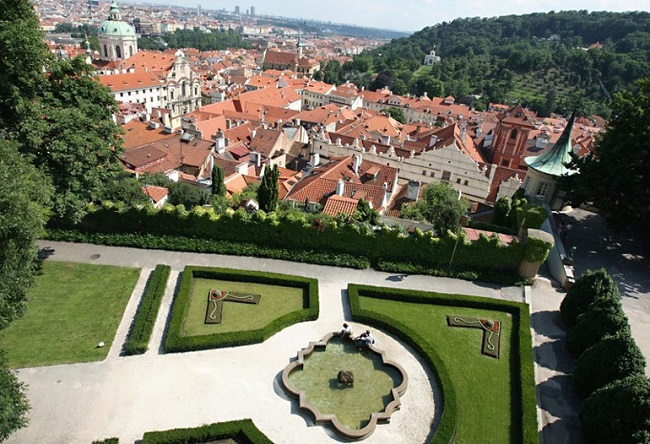
Until the end of August, the southern gardens of the Castle will be open to the public
 |
Prague - The southern gardens of Prague Castle will be open to the public until the end of August. In the area of today’s garden, Emperor Rudolf II had his baths, and from the window of the Ludvík wing, the governors Slavata and Martinic fell during the Prague defenestration in 1618. The current form of the southern gardens was given by Slovenian architect Jože Plečnik after the establishment of Czechoslovakia, who was invited by President Tomáš Garrigue Masaryk. This was stated today by Petr Kroupa, director of the heritage preservation department of the Office of the President of the Republic. The gardens were closed for a year due to the ongoing reconstruction of the southern facade and windows of the Castle. According to the office spokesperson Vít Novák, repairs will not be completed before 2022.
The area south of the Castle was originally part of its defense between two walls. "There were very steep slopes here that were not frequently visited. Only during the time of Maria Theresa was the area filled in and a promenade built," said Kroupa. Later, an unmaintained English park was created.
As early as the time of Emperor Rudolf II, the western part of today’s garden was modified, where he had baths and a aviary for birds constructed. Rare birds were part of his collecting passion just like the Lion Courtyard on the opposite side of the Castle, where he kept big cats or his famous art collections. Architect Plečnik built a monumental staircase with antiquizing elements at the entrance to the garden from Hradčanské Square.
"Originally, a huge monument to Czechoslovak legionnaires was to be placed above it, which was to be visible from all over Prague. At its top, an eternal flame was to burn," stated Kroupa. In the end, it was not built; an obelisk was erected in the third courtyard ten years after the establishment of Czechoslovakia.
Further east stand a pair of stone obelisks topped with crosses as a reminder of the third Prague defenestration. In 1618, two governors, Vilém Slavata of Chlum and Košumberk, and Jaroslav Bořita of Martinice, along with their secretary, were thrown from a window. According to Kroupa, the information that they landed on a rubbish dump is an example of contemporary "fake news".
"The Catholic governors considered it a miracle that they survived a fall from 17 meters. This was not appreciated by the Protestants who threw them out of the window, so they had woodcuts printed in the Netherlands showing them falling into a dung pit," he added. However, according to him, there could not have been any dung pit on the steep slopes that existed in today’s garden at that time.
The gardens were closed for a year due to renovations and will once again be inaccessible starting in September. Repairs will continue, and part of the garden is therefore fenced off. Visitors can come between 10:00 and 18:00. The opening of the gardens will be announced daily by trumpeters of the Castle Guard from the Matyáš Pavilion towards Malá Strana. Entrance will be from Opyš, and exit will be permitted through the same entrance or via Plečnik's staircase to Hradčanské Square. The Bull staircase connecting the southern gardens with the third courtyard will remain inaccessible due to renovations.
The roof of the southern wing of the New Royal Palace was over 100 years old before the repairs, and the facade was last repaired in 1982. Before the start, the cost of reconstruction was estimated at 20 million crowns. All windows will also need to be replaced.
Prague Castle, like other Czech monuments, was closed until the end of May due to the fight against the coronavirus pandemic. The administrators of the most visited Czech monument also have to deal with a decline in foreign tourists, who are returning to Prague only slowly. Therefore, they are trying to attract primarily Czech visitors. The area is open from 06:00 to 22:00.
The English translation is powered by AI tool. Switch to Czech to view the original text source.
0 comments
add comment










